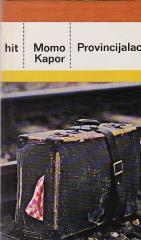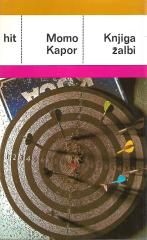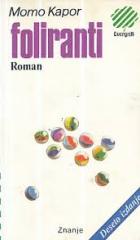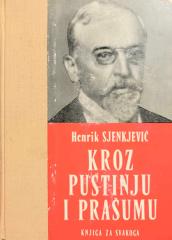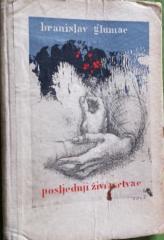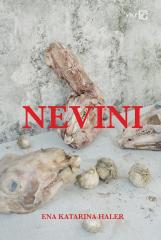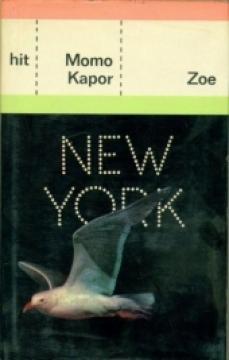
Zoe
Roman "Zoe" (1978.), jedno od najpopularnijih djela Moma Kapora, prati Arsena Lera, 39-godišnjeg povjesničara umjetnosti iz izmišljene Republike Kozilije – malog otoka pod autoritarnim režimom
Ler, oženjen otac male kćeri Maje i kustos galerije u gradu Mimozi, prima zadatak od ministra kulture da u New Yorku na aukciji otkupi portret "Djevojčica s lutkom" slikara Valdemara Udinija, ključno djelo nacionalnog nasljeđa. Putuje avionom preko Atine u Megapolis, doživljavajući šok kontrasta između provincijalnog života i haotičnog grada.
Na aukciji, uz pomoć konzulata, kupuje sliku za 1200 dolara, ali se suočava s princezom Zoe Kudelin, izgnanom članicom svrgnute kraljevske dinastije, rođenom 1938. – istog dana kao i Ler. Zoe, kozmopolitska žena u egzilu, živi u Greenwich Villageu, baveći se promocijama i modom da preživi. Tvrdi da je portret njen dječački lik, naslikan od Udinija. Njih dvoje započinju strastvenu romansu: šetnje Central Parkom, večere u "Russian Tea Roomu", posjete muzejima poput Guggenheima i istraživanje kozilijanske zajednice u Bronxu, u krčmi "Mimosa". Ler se preseljava kod nje, mijenjajući navike, dok se suočava s ponudama bogatih kolekcionara i tragovima prošlosti.
Zoe nosi teret egzila: smrt oca, kralja Nikole Četvrtog, u hotelu "Savoy", i posjeduje samo dugme s njegove košulje kao nasljeđe. Roman istražuje teme totalitarne represije (cenzura, paranoja, zabrane bjegstva), egzila i nostalgije za izgubljenim domom, identiteta male nacije u svjetskom kaosu (Kozilija kao "nepostojeći" otok), umjetnosti kao otpora i mosta ka korijenima, te ljubavi između prošlosti i sadašnjosti – moderne bajke o pastiru i princezi. Kroz satirične opise, introspektivne monologe i živopisne urbane scene, Kapor prikazuje kontrast tradicije i modernosti, siromaštva emigranata i lažnog sjaja, erotike i usamljenosti, podsjećajući da je egzil ne samo geografski, već i duševni fenomen.
Jedan primjerak je u ponudi
